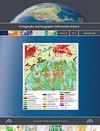Adapting mobile map application designs to map use context: a review and call for action on potential future research themes
IF 2.4
3区 地球科学
Q1 GEOGRAPHY
Cartography and Geographic Information Science
Pub Date : 2022-01-13
DOI:10.1080/15230406.2021.2015720
引用次数: 12
Abstract
ABSTRACT The increased use of mobile maps in our highly mobile digital culture has resulted in a large variety of map users and map use situations. For mobile map applications that engage a broad user base and feature diverging map usage contexts, one-size-fits-all map interface designs might result in significant usability tradeoffs. To respond to this challenge, changing the map design based on map use context attributes, such as increasing icon sizes for people with impaired vision or using the user’s position to highlight information on the map are only a few of the many ways mobile map applications can be designed and adapted to respond to the needs of users and their map use situations. However, there remains a clear need for research on the intersections between map use contexts and mobile map application design and adaptation. Therefore, this article reviews and synthesizes literature on map use context research and design adaptation of mobile map applications. To push forward efforts in these areas, we propose future research themes and approaches. We first evaluate options for modeling map use context, which plays a significant part in map adaptations for detecting relevant context attributes on which to base adaptation decisions. We then consider dynamic possibilities to assess the usability of these adaptations by reviewing the HEART framework. We conclude by offering ways to move the suggested approaches from concepts closer to practice.使移动地图应用程序设计适应地图使用环境:对未来潜在研究主题的回顾和行动呼吁
在我们高度移动化的数字文化中,移动地图的使用越来越多,导致了各种各样的地图用户和地图使用情况。对于具有广泛用户基础和不同地图使用背景的移动地图应用程序,一刀切的地图界面设计可能会导致重大的可用性权衡。为了应对这一挑战,根据地图使用上下文属性改变地图设计,例如为视力受损的人增加图标大小,或使用用户的位置在地图上突出显示信息,这些只是移动地图应用程序可以设计和调整的许多方法中的一小部分,以响应用户的需求和他们的地图使用情况。然而,地图使用环境与移动地图应用程序设计和适应之间的交叉点仍有明显的研究需求。因此,本文对地图使用情境研究和手机地图应用程序设计适配方面的文献进行了综述和综合。为了推进这些领域的工作,我们提出了未来的研究主题和方法。我们首先评估了地图使用上下文建模的选项,这在地图自适应中起着重要的作用,可以检测相关的上下文属性,并以此为基础做出自适应决策。然后,我们考虑动态的可能性,通过回顾HEART框架来评估这些适应性的可用性。最后,我们提供了将建议的方法从概念更接近实践的方法。
本文章由计算机程序翻译,如有差异,请以英文原文为准。
求助全文
约1分钟内获得全文
求助全文
来源期刊
CiteScore
5.20
自引率
20.00%
发文量
23
期刊介绍:
Cartography and Geographic Information Science (CaGIS) is the official publication of the Cartography and Geographic Information Society (CaGIS), a member organization of the American Congress on Surveying and Mapping (ACSM). The Cartography and Geographic Information Society supports research, education, and practices that improve the understanding, creation, analysis, and use of maps and geographic information. The society serves as a forum for the exchange of original concepts, techniques, approaches, and experiences by those who design, implement, and use geospatial technologies through the publication of authoritative articles and international papers.

 求助内容:
求助内容: 应助结果提醒方式:
应助结果提醒方式:


